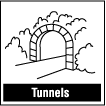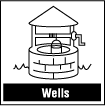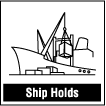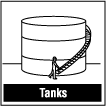Is working in a confined space hazardous?Many workers are injured and killed each year while working in confined spaces. An estimated 60% of the fatalities have been among the would-be rescuers. A confined space can be more hazardous than regular workspaces for many reasons. To effectively control the risks associated with working in a confined space, a Confined Space Hazard Assessment and Control Program should be implemented for your workplace. Before putting together this program, make sure to review the specific regulations that apply to your workplace. All jurisdictions within Canada have regulations dealing with confined space entry. The regulations can vary slightly from jurisdiction to jurisdiction. A contact list for the jurisdictions is available in the OSH Answers document "Canadian Government Departments Responsible for OH&S". More information about the Confined Space Hazard Assessment and Control Program is located in the OSH Answers document "Confined Space - Program". If the confined space cannot be made safe for the worker by taking precautions then workers should NOT enter the confined space until it is made safe to enter by additional means.
What is a confined space?Generally speaking, a confined space is an enclosed or partially enclosed space that: - is not primarily designed or intended for human occupancy
- has a restricted entrance or exit by way of location, size or means
- Can represent a risk for the for the health and safety of anyone who enters, due to one or more of the following factors:
- its design, construction, location or atmosphere
- the materials or substances in it
- work activities being carried out in it, or the
- mechanical, process and safety hazards present
Confined spaces can be below or above ground. Confined spaces can be found in almost any workplace. A confined space, despite its name, is not necessarily small. Examples of confined spaces include silos, vats, hoppers, utility vaults, tanks, sewers, pipes, access shafts, truck or rail tank cars, aircraft wings. Ditches and trenches may also be a confined space when access or egress is limited.
What are the hazards in a confined space?All hazards found in a regular workspace can also be found in a confined space. However, they can be even more hazardous in a confined space than in a regular worksite. Hazards in confined spaces can include: - Poor air quality: There may be an insufficient amount of oxygen for the worker to breathe. The atmosphere might contain a poisonous substance that could make the worker ill or even cause the worker to lose consciousness. Natural ventilation alone will often not be sufficient to maintain breathable quality air.
- Chemical exposures due to skin contact or ingestion as well as inhalation of 'bad' air.
- Fire Hazard: There may be an explosive/flammable atmosphere due to flammable liquids and gases and combustible dusts which if ignited would lead to fire or explosion.
- Process-related hazards such as residual chemicals, release of contents of a supply line.
- Noise.
- Safety hazards such as moving parts of equipment, structural hazards, entanglement, slips, falls.
- Radiation.
- Temperature extremes including atmospheric and surface.
- Shifting or collapse of bulk material.
- Barrier failure resulting in a flood or release of free-flowing solid.
- Uncontrolled energy including electrical shock.
- Visibility.
- Biological hazards.
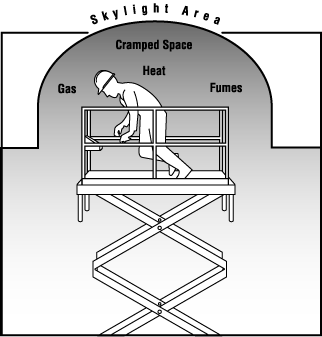
 |
Why is working in a confined space more hazardous than working in other workspaces?Many factors need to be evaluated when looking for hazards in a confined space. There is smaller margin for error. An error in identifying or evaluating potential hazards can have more serious consequences. In some cases, the conditions in a confined space are always extremely hazardous. In other cases, conditions are life threatening under an unusual combination of circumstances. This variability and unpredictability is why the hazard assessment is extremely important and must be taken very seriously each and every time one is done. Some examples include: - The entrance/exit of the confined space might not allow the worker to get out in time should there be a flood or collapse of free-flowing solid.
- Self-rescue by the worker is more difficult.
- Rescue of the victim is more difficult. The interior configuration of the confined space often does not allow easy movement of people or equipment within it.
- Natural ventilation alone will often not be sufficient to maintain breathable quality air. The interior configuration of the confined space does not allow easy movement of air within it.
- Conditions can change very quickly.
- The space outside the confined space can impact on the conditions inside the confined space and vice versa.
- Work activities may introduce hazards not present initially.
What should be done when preparing to enter the confined space?The important thing to remember is that each time a worker plans to enter any work space, the worker should determine if that work space is considered a confined space. Be sure the confined space hazard assessment and control program has been followed. Please see the OSH Answers document "Confined Space - Program" for more information. The next question to ask is - Is it absolutely necessary that the work be carried out inside the confined space? In many cases where there have been deaths in confined spaces, the work could have been done outside the confined space! Before to entering any confined space, a trained and experienced person should identify and evaluate all the potential hazards within the confined space. An important step in determining the hazards in a confined space is air testing. Air quality testing: The air within the confined space should be tested from outside of the confined space before entry into the confined space. Care should be taken to ensure that air is tested throughout the confined space - side-to-side and top to bottom. A trained worker using detection equipment which has remote probes and sampling lines should do the air quality testing. The sampling should show that: - The oxygen content is within safe limits - not too little and not too much.
- A hazardous atmosphere (toxic gases, flammable atmosphere) is not present.
- Ventilation equipment is operating properly.
The results of the tests for these hazards are to be recorded on the Entry Permit along with the equipment or method(s) that were used in performing the tests. Please see the OSH Answers document "Confined Space - Program" for more information about entry permits. Air testing may need to be ongoing depending on the nature of the potential hazards and the nature of the work. Conditions can change while workers are inside the confined space and sometimes a hazardous atmosphere is created by the work activities in the confined space.
How are hazards controlled in confined spaces?The traditional hazard control methods found in regular worksites can be effective in a confined space. These include engineering controls, administrative controls and personal protective equipment. Engineering controls are designed to remove the hazard while administrative controls and personal protective equipment try to minimize the contact with the hazard. However, often because of the nature of the confined space and depending on the hazard, special precautions not normally required in a regular worksite may also need to be taken. The engineering control commonly used in confined spaces is mechanical ventilation. The Entry Permit system is an example of an administrative control used in confined spaces. Personal protective equipment (respirators, gloves, ear plugs) is commonly used in confined spaces as well.
How is air quality maintained?Natural ventilation (natural air currents) is usually not reliable and not sufficient to maintain the air quality. Mechanical ventilation (blowers, fans) is usually necessary to maintain air quality. - If mechanical ventilation is provided, there should be a warning system in place to immediately notify the worker in the event of a hazard or a failure in the ventilation equipment
- Care should be taken to make sure the air being provided by the ventilation system to the confined space is 'clean'.
- Ease of air movement throughout the confined space should be considered because of the danger of pockets of toxic gases still remaining even with the use of mechanical ventilation.
- Do not substitute oxygen for fresh air. Increasing the oxygen content will significantly increase the risk of fire and explosion.
- The use of mechanical ventilation should be noted on the entry permit
How are fire and explosion prevented?Work where a flame is used or a source of ignition may be produced (hot work) should not normally be performed in a confined space unless: - All flammable gases, liquids and vapors are removed prior to the start of any hot work. Mechanical ventilation is usually used to
- Keep the concentration of any explosive or flammable hazardous substance less than 10% of its Lower Explosive Limit AND
- Make sure that the oxygen content in the confined space is not enriched. Oxygen content should be less than 23% but maintained at levels greater than 18%. (These numbers can vary slightly from jurisdiction to jurisdiction.)
- Surfaces coated with combustible material should be cleaned or shielded to prevent ignition.
While doing the hot work, the concentrations of oxygen and combustible materials must be monitored to make certain that the oxygen levels remain in the proper range and the levels of the combustible materials do not get higher than 10% of the Lower Explosive Limit. In special cases it may not be possible, and additional precautions must be taken to ensure the safety of the worker prior to entering the confined space. If a potential flammable atmosphere hazards are identified during the initial testing, the confined space should be cleaned or purged and ventilated and tested again before entry to the confined space is allowed. Only after the air testing is within allowable limits should entry occur as the gases used for purging can be extremely hazardous.
How are energy sources controlled?All potentially hazardous energy sources must be de-energized and locked out prior to entry to the confined space so that equipment cannot be turned on accidentally.
What are other safety precautions?Many other situations or hazards may be present in a confined space. Be sure that all hazards are controlled including: - Any liquids or free-flowing solids are removed from the confined space to eliminate the risk of drowning or suffocation.
- All pipes should be physically disconnected or isolation blanks bolted in place. Closing valves is not sufficient.
- A barrier is present to prevent and liquids or free-flowing solids from entering the confined space.
- The opening for entry into and exit from the confined space must be large enough to allow the passage of a person using protective equipment.
Document last updated on December 20, 2002
Copyright ©1997-2006 Canadian Centre for Occupational Health & Safety
|
